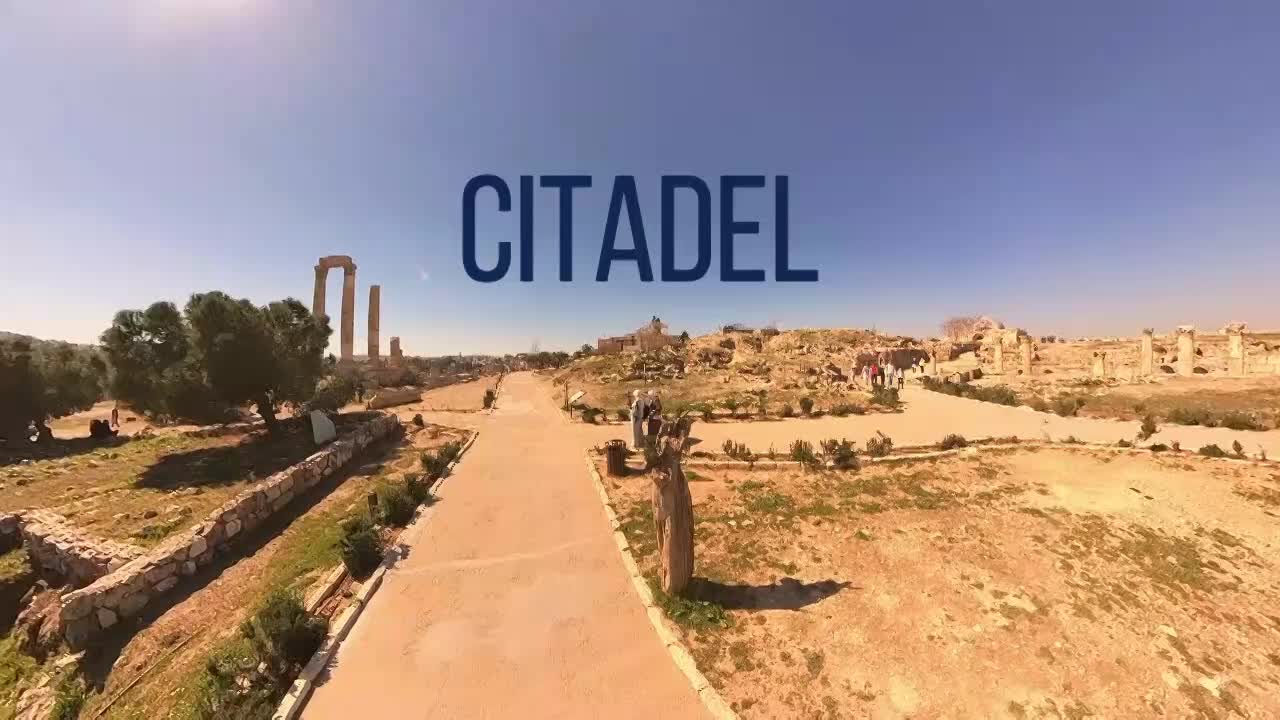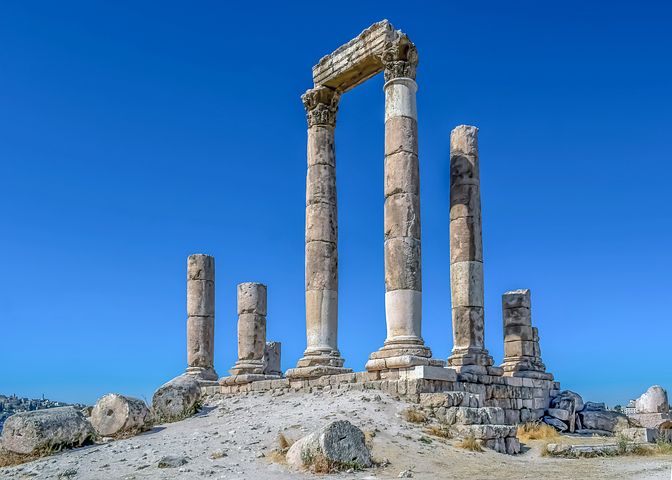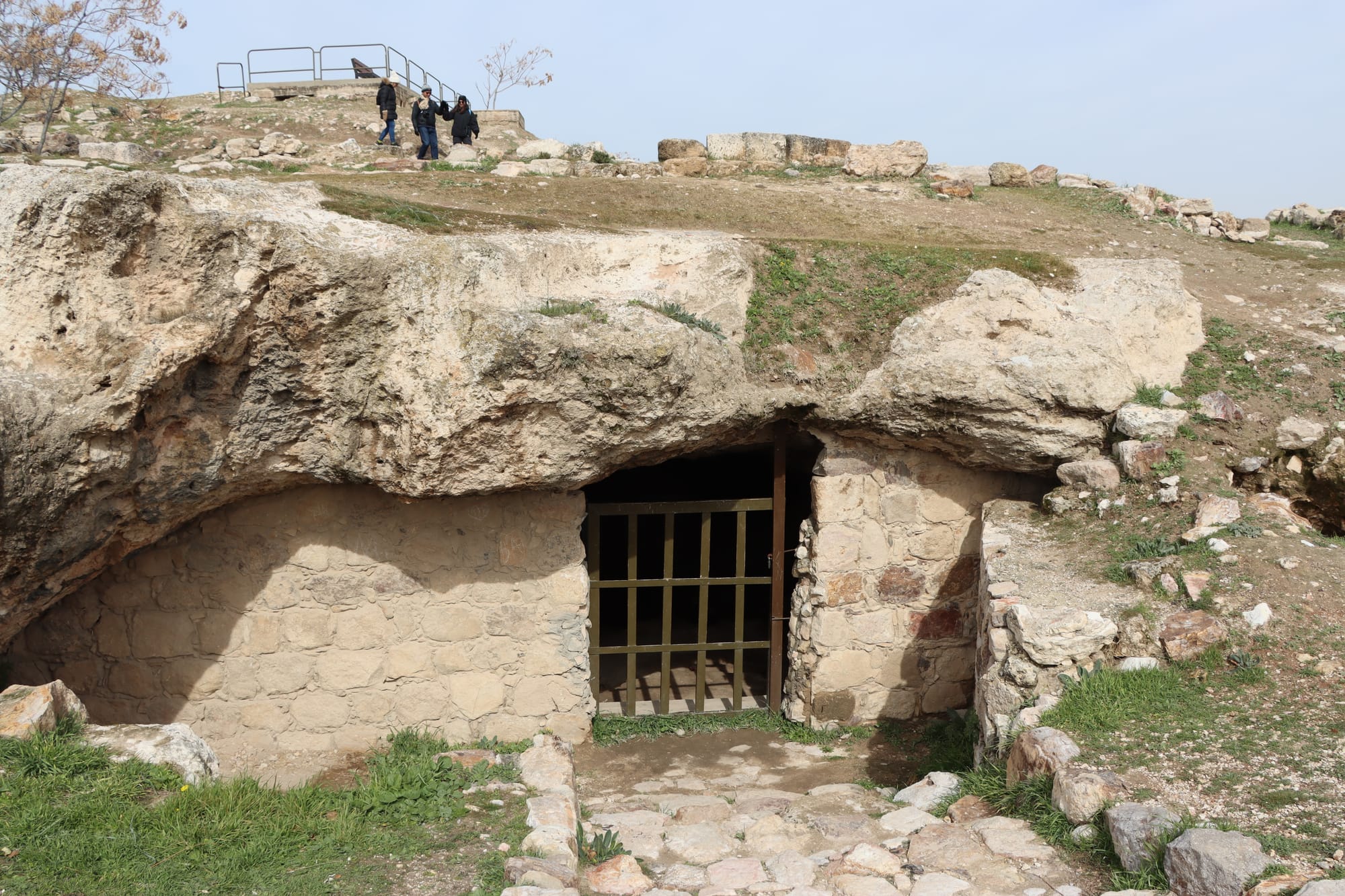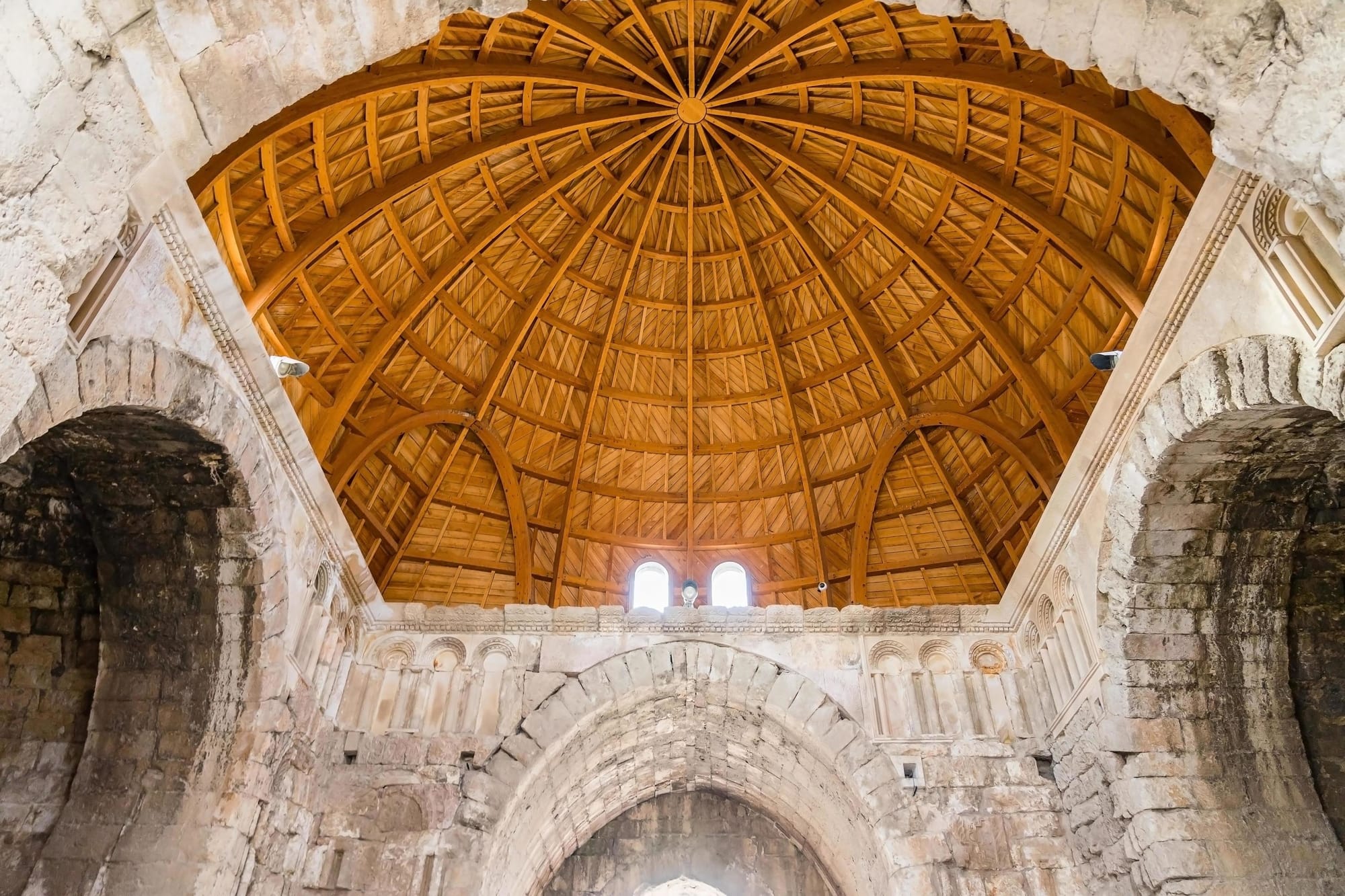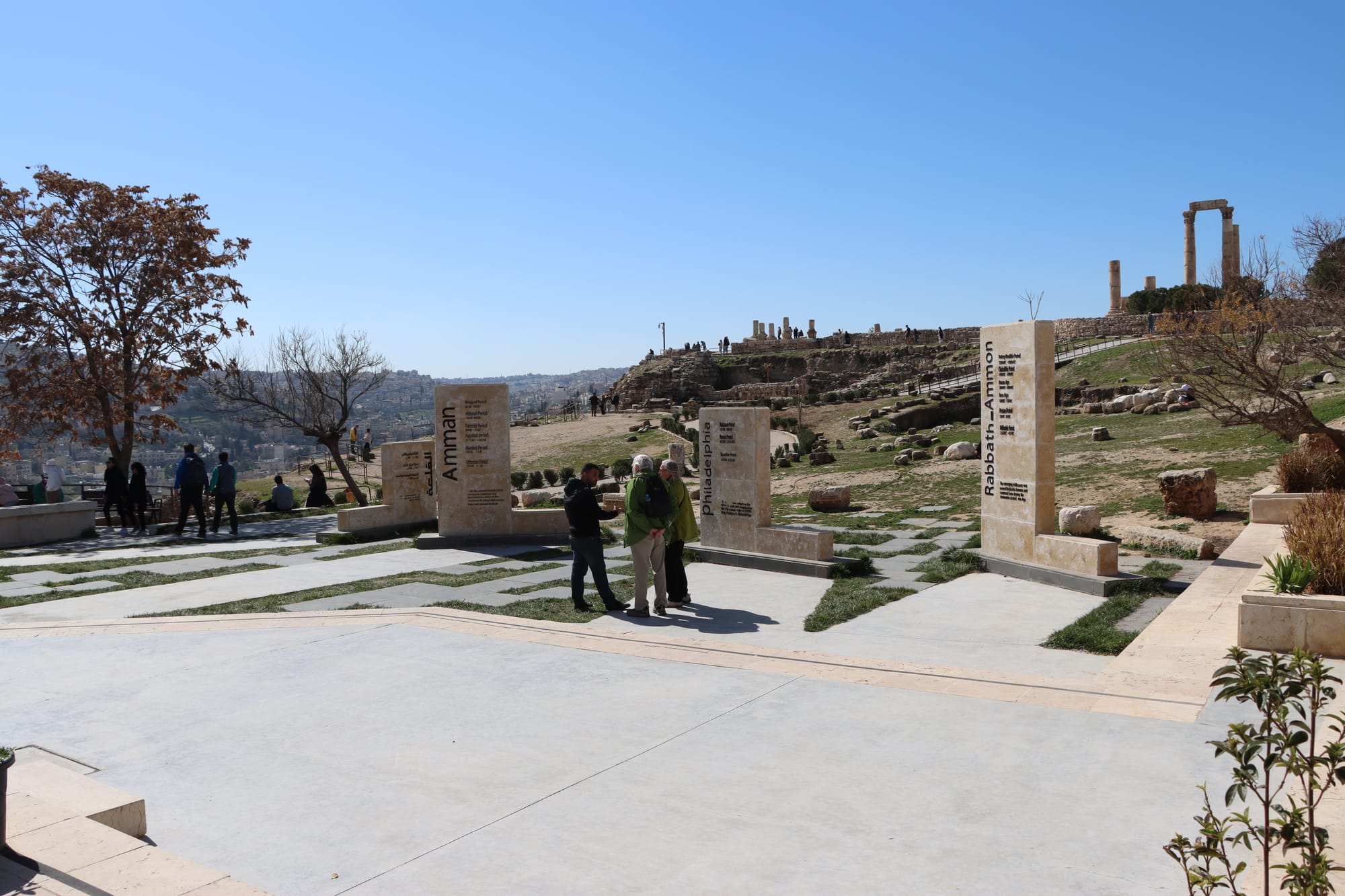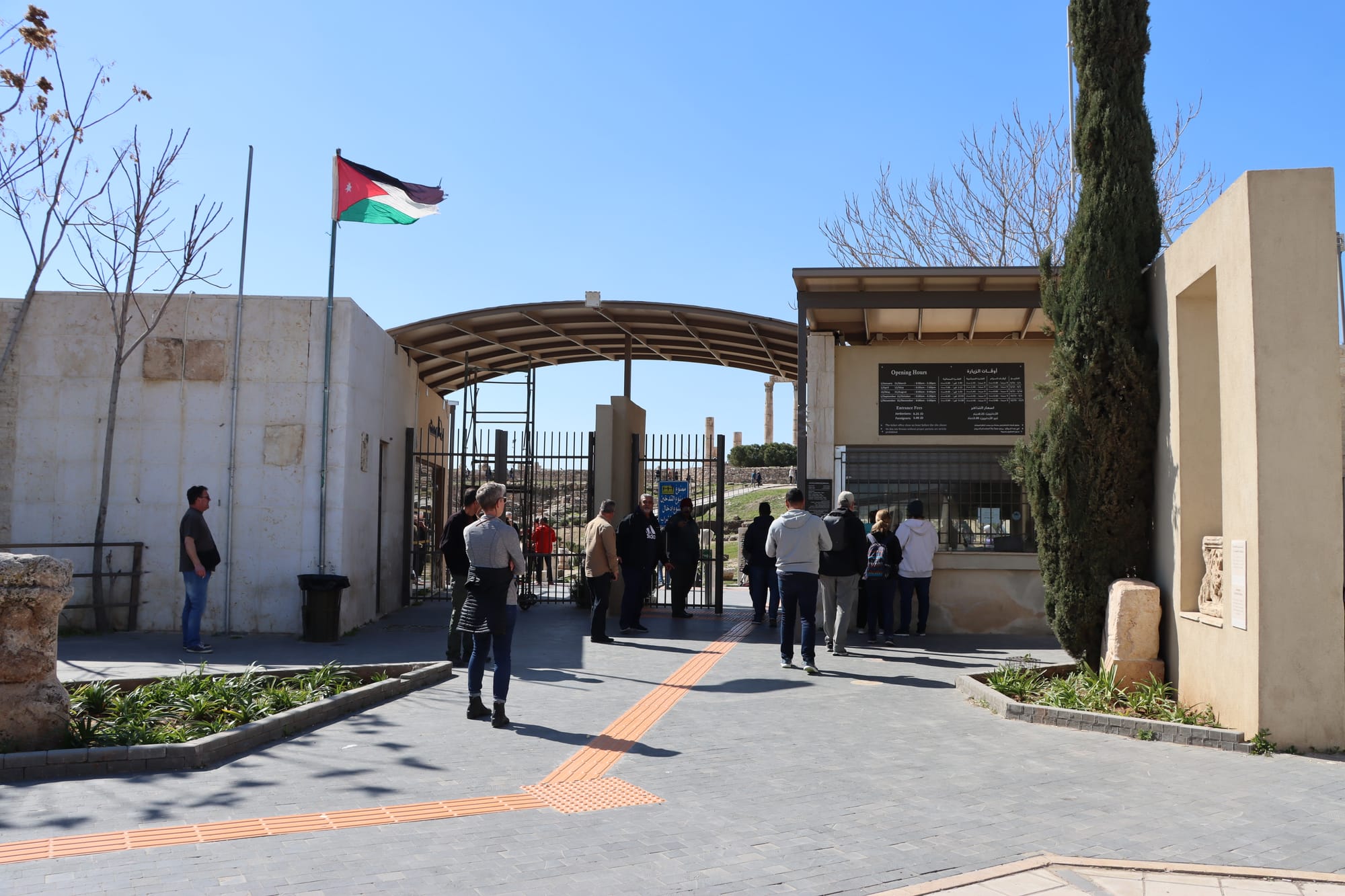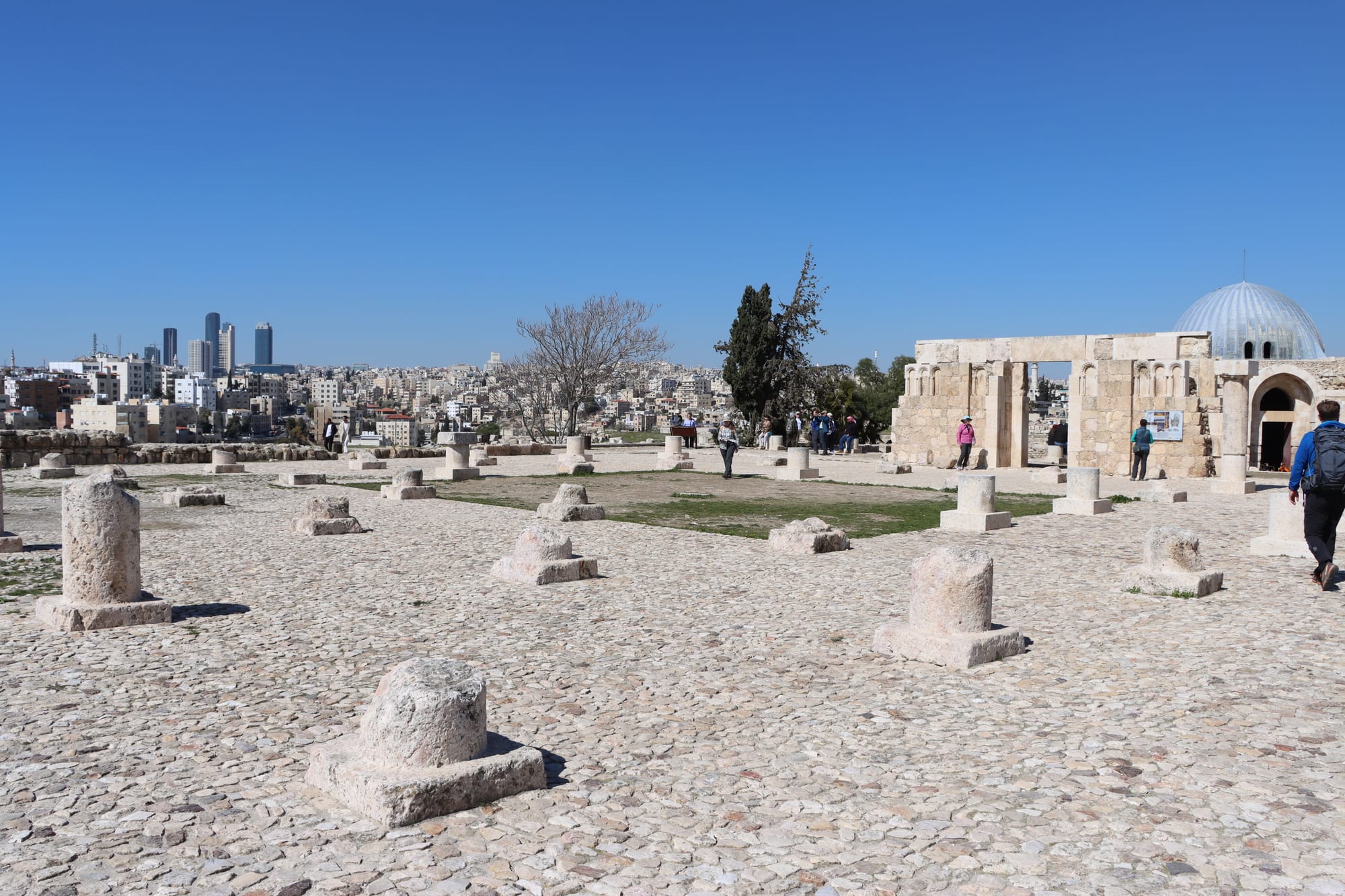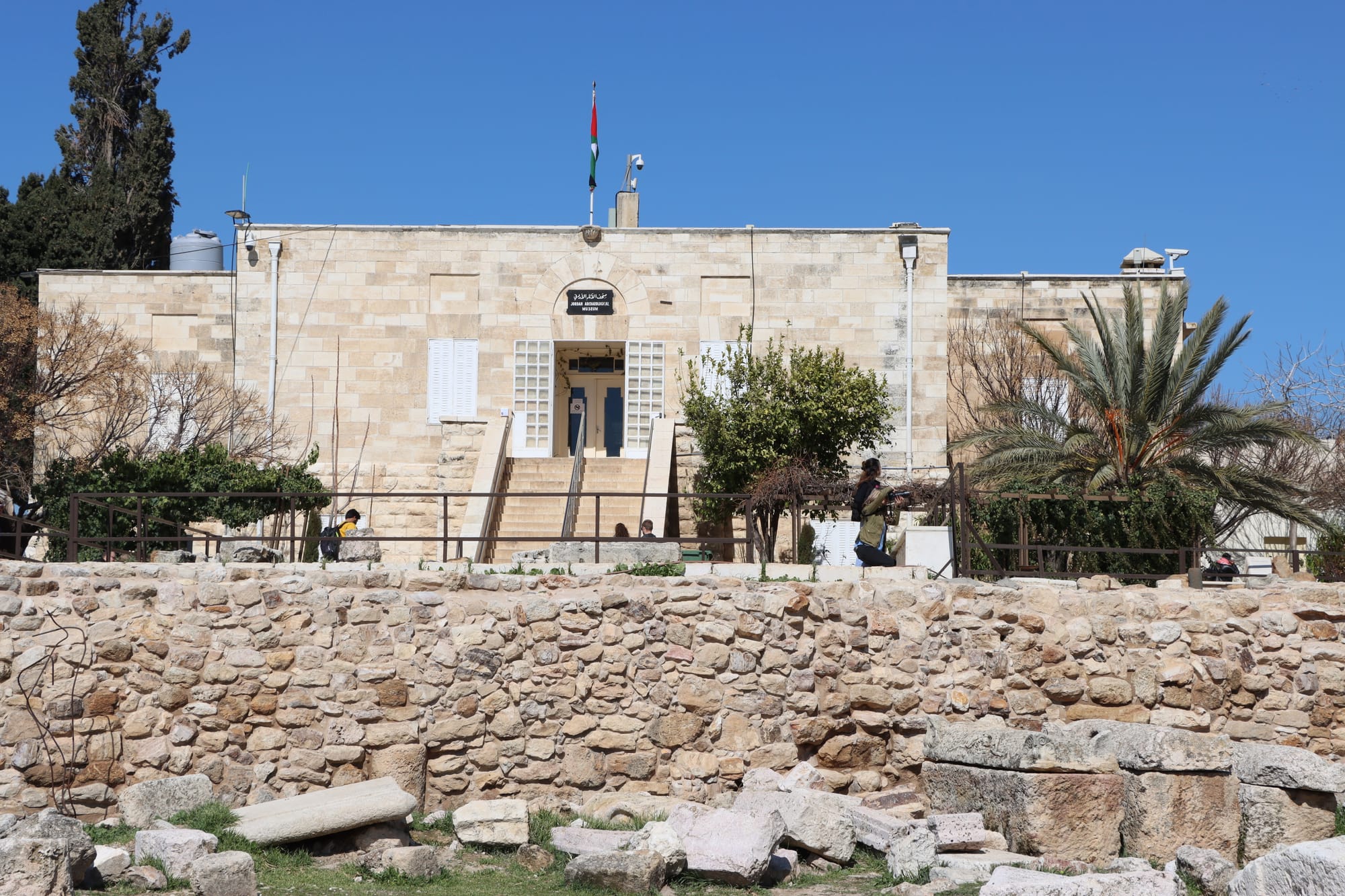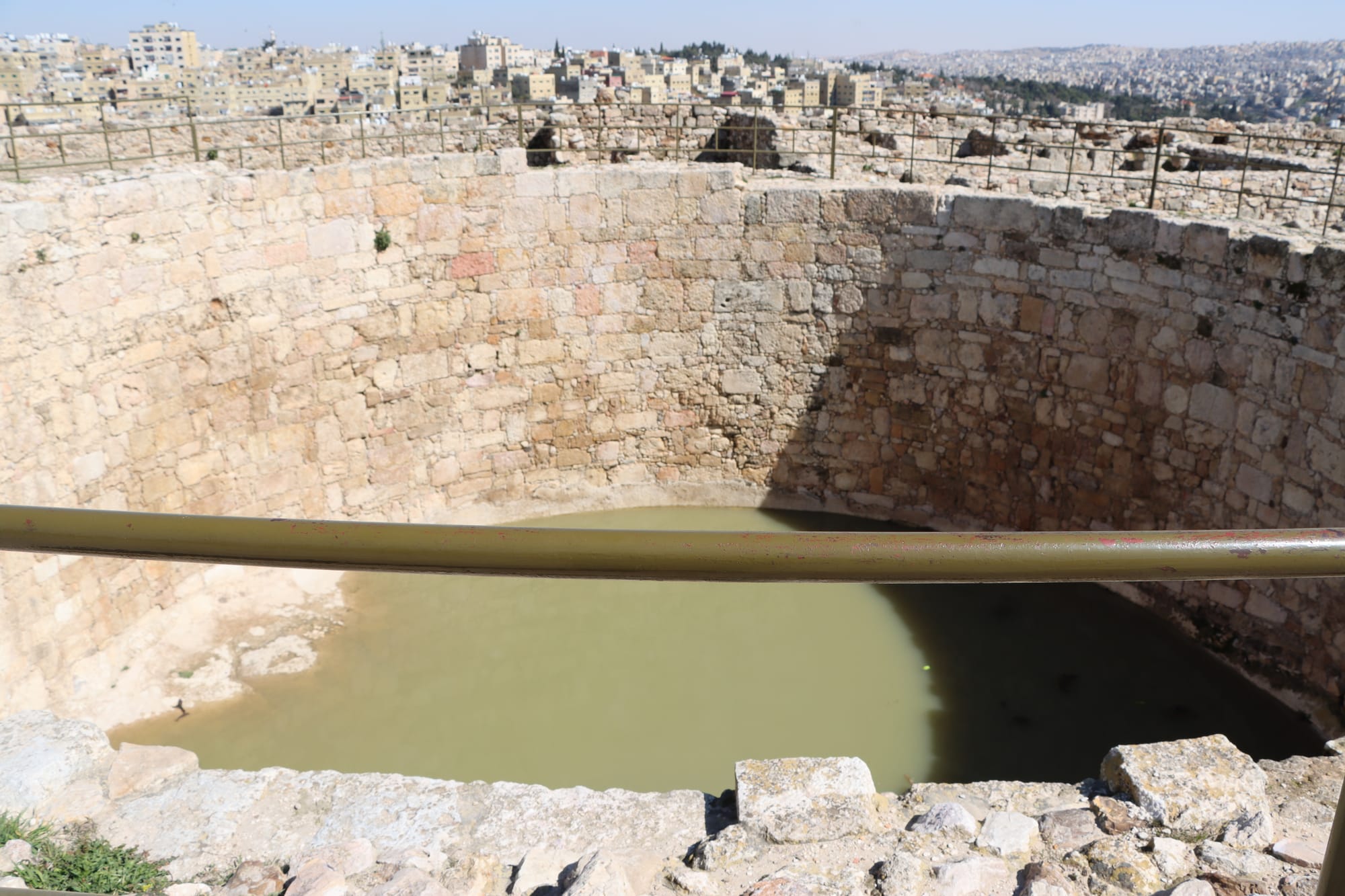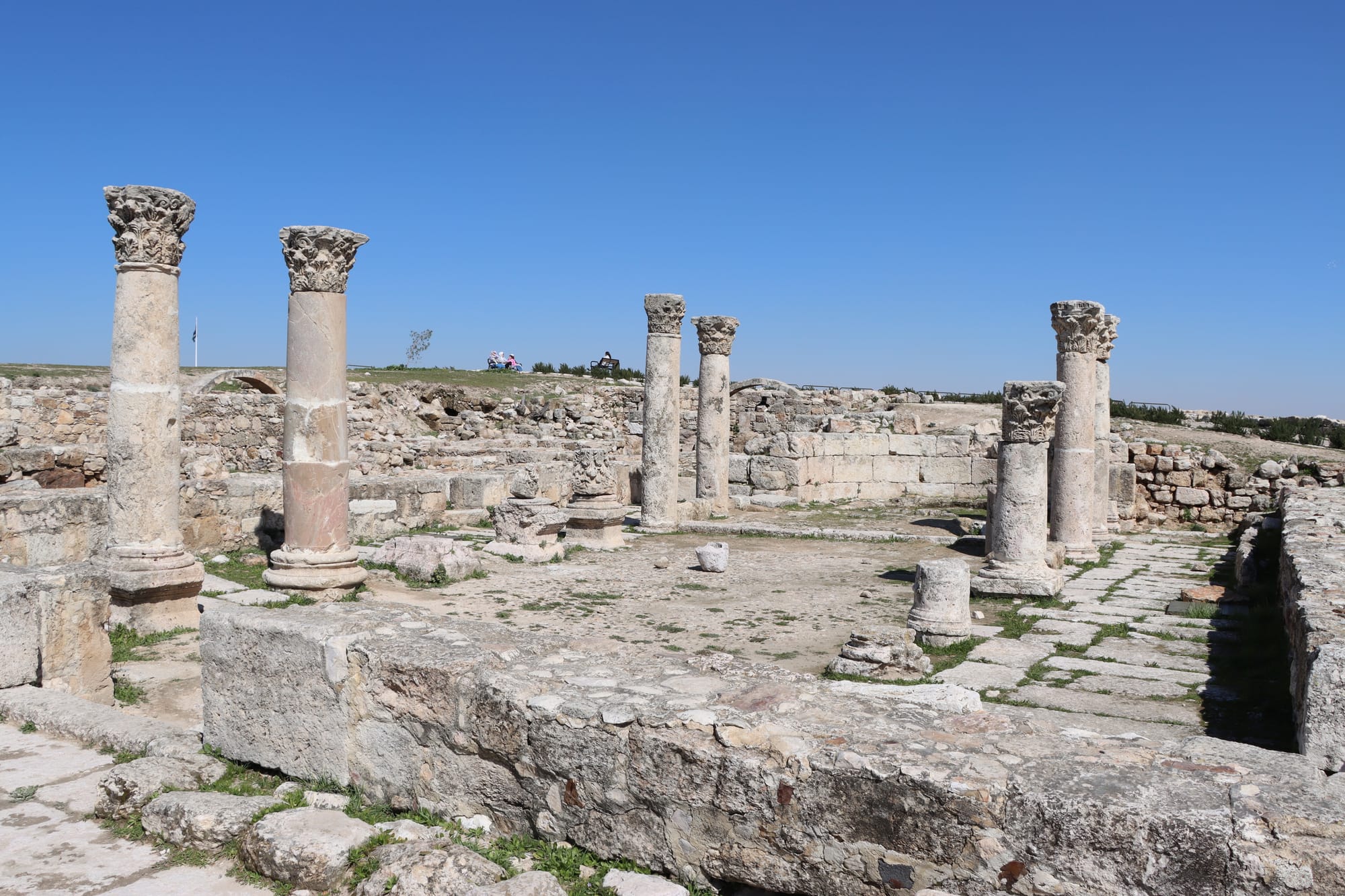Citadel
The cultural history of Amman began with the Neolithic period (see Ain Ghazal) and flourish through the ages. At the Jabal al-Qal’a (the Citadel), part of a fortified city, which is dated to the Middle Bronze Age (1750-1550 BC), can be seen. Furthermore, a tomb dated to the same period was found with its rich material offering, some of Egyptian origin. During the Iron Age, the citadel was the capital and the center of the Ammonite kingdom. The city was also fortified with defensive wall. Cultural materials are found in the Ammonite city such as royal statues which have inscriptions of the name of Ammonite kings.
Major cultural change at the Citadel started with the Hellenistic –Roman period. The Citadel hosted the major monumental buildings such as the Temple, and administrative quarter. It represents the Acropolis of the Hellenistic and Roman city. meanwhile the midtown of Amman was the place of public buildings such the Theatre, Odeon, Forum, and the Nymphaeum. The city has planned layout, consisting of two main streets: The Cardo which is running north-south, and the Decumanus which is running east-west.
Click for Direction
Major cultural change at the Citadel started with the Hellenistic –Roman period. The Citadel hosted the major monumental buildings such as the Temple, and administrative quarter. It represents the Acropolis of the Hellenistic and Roman city. meanwhile the midtown of Amman was the place of public buildings such the Theatre, Odeon, Forum, and the Nymphaeum. The city has planned layout, consisting of two main streets: The Cardo which is running north-south, and the Decumanus which is running east-west.
Click for Direction
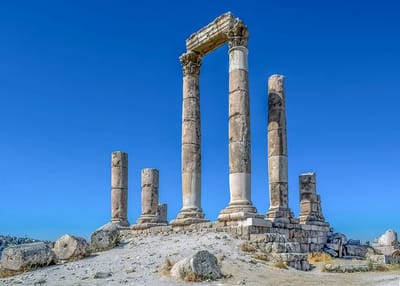
360
Click on the to see the full plan of the site.
Click on the to move from 360 image to the next one.
Click on the image and hold and move (right, left, up or down) to discover the site 360 image.
Street View Visit
Click on the arrows to start your visit experience!
